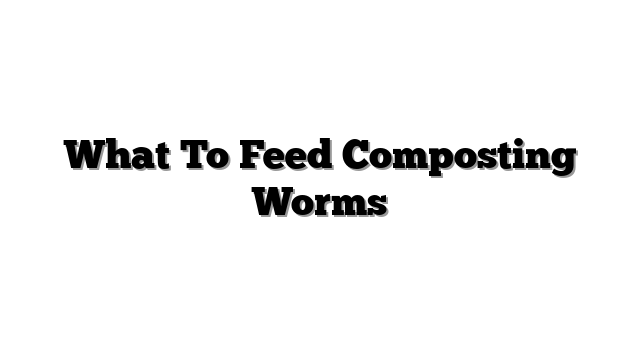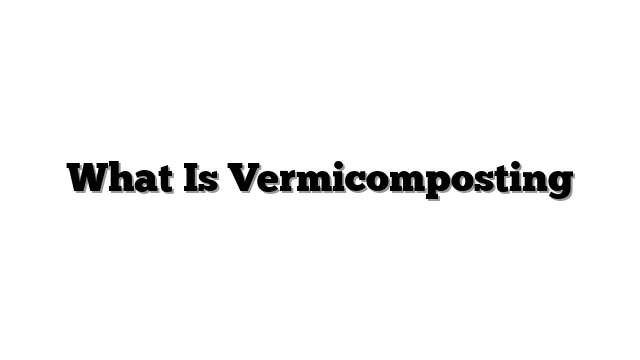Setting Up A Worm Bin
Imagine your garden soil. Is it rich and dark?
Or does it feel tired?
Many gardeners face this challenge.
We want plants to grow strong.
We want lots of vegetables.
Kitchen waste piles up too.
It goes into the trash.
This waste could help our gardens.
There is a simple answer.
It is called worm composting.
Some people call it vermicomposting.
Worms eat food scraps.
They make amazing soil.
This soil makes plants happy.
It is good for the planet.
Setting up a worm bin is easy.
You can do it at home.
This guide shows every step.
We cover bins and worms.
We talk about feeding them.
We explain how to use the soil.
Learn about setting up a worm bin.
Improve your garden soil now.
Help reduce waste too.
This is gardening for beginners.
It helps soil health greatly.
Why Start Worm Composting?
Worms eat organic material.
They turn it into soil food.
This process is vermicomposting.
It is simple science working.
Gardeners gain many things.
They get premium soil food.
It is called worm castings.
Castings are better than compost.
They hold more plant food.
They have helpful tiny life.
These microbes help plant roots.
Think of food scraps.
Fruit peels. Vegetable bits.
Coffee grounds.
These go to the bin.
They do not go to a landfill.
This reduces kitchen waste.
It reduces food scraps waste.
This supports sustainable living.
Waste reduction feels good.
Worm castings are natural fertilizer.
They make garden soil better.
Soil structure improves.
Soil holds water well.
Air gets to plant roots.
It is an eco-friendly gardening choice.
Worm bins need little work.
You do not turn them much.
Traditional compost needs turning.
Worm bins work all year.
You can keep them indoors.
An indoor worm bin works well.
Sustainable gardening is popular.
Self-sufficient methods are growing.
Worm composting fits perfectly.
It helps your garden thrive.
It helps the Earth too.
List the benefits you like best.
This keeps you motivated.
Worm composting is helpful.
It improves soil health.
It uses kitchen waste wisely.
Choosing and Preparing Your Worm Bin
You need a place for worms.
This is your worm bin.
Setting up a worm bin starts here.
Compost bin for beginners can be simple.
Use plastic storage tubs.
Drill holes for air.
Drill holes for water drain.
Wooden boxes work too.
Wood breathes naturally.
Make sure wood is not treated.
You can buy special bins.
Stackable trays are common.
Worms move up as they eat.
Flow-through bins let soil fall out.
Consider the bin size.
How much food waste do you make?
A family of four needs a bigger bin.
Worms need air to breathe.
Bins need ventilation holes.
Water should not sit inside.
Drainage holes stop this.
You need a bin.
You need bedding material.
Water is needed too.
You need worms later.
Bedding is the worm home.
It holds moisture for worms.
It must be right.
Shredded newspaper works well.
Use black and white print.
Cardboard is also good.
Tear it into small pieces.
Coconut coir is another choice.
Aged compost works too.
Mix different things.
Shred materials small.
Make it easy for worms.
Moisten the bedding.
Add water carefully.
Squeeze a handful.
Water should drip slowly.
It should feel like a wet sponge.
Not soaking wet. Not dry dust.
This is crucial for a healthy worm bin.
Worms do not like bad temperatures.
Red wigglers like it warm.
Think 55 to 75 degrees F.
Keep bins out of sun.
Keep bins away from cold.
Indoor worm bin stays steady.
Outdoor worm bin needs shelter.
Put it in a garage.
Put it on a porch.
Protect it from weather.
Preparing bedding is step one.
Shred newspaper and cardboard.
Mix materials together.
Add water slowly.
Mix it all well.
Squeeze to check moisture.
Place bedding in your bin.
Fill it about halfway.
You now have a worm home.
This is part of DIY worm bin setup.
Home composting begins.
Introducing Your Worms and Getting Started
You built the worm home.
Now add the residents.
Which worms work best?
Use red wigglers.
Their science name is Eisenia fetida.
These worms love food scraps.
They eat a lot quickly.
They make baby worms fast.
They live well in bins.
Other worms exist.
European Nightcrawlers dig deeper.
Red wigglers stay on top.
They are best for vermicomposting bins.
Where do you get red wigglers?
Buy them online.
Find local bait shops.
Ask other composters.
Start with enough worms.
How much food do you waste?
One pound of worms eats about a half pound of food a day.
Maybe one pound a day.
Start with one or two pounds.
Add worms gently to the bin.
Place them on top of bedding.
Leave the bin light on.
Worms do not like light.
They will move down into bedding.
They will hide from light.
This helps them settle in.
Give them a first meal.
Start with a little food.
Use easy foods first.
Melon rinds work well.
Soft vegetables are good.
Bury the food slightly.
Put it under the bedding.
Check your bin often at first.
Look at moisture.
Feel the temperature.
See how the worms act.
Are they hiding in bedding?
This is a good sign.
They are getting started.
This is the composting process beginning.
It is part of gardening for beginners.
Add worms carefully.
Give them a small first meal.
Watch them settle in their new home.
What to Feed Your Composting Worms (And What Not To)
Worms need a balanced diet.
Not like our food rules.
They eat organic waste.
Think about what they like.
Some food scraps are good.
Some food scraps are bad.
Here is the “Yes” list.
Fruits and vegetable peels are great.
Coffee grounds and filters too.
Tea bags work (remove the metal staple).
Crushed eggshells help worms.
They need grit to digest food.
Shredded cardboard is food.
Shredded paper is food.
Use plain paper. No glossy ink.
Small bits of bread are fine.
Cooked pasta is okay.
Small amounts of leaves work.
Grass clippings are okay.
Make sure no pesticides were used.
Here is the “No” list.
Do not add meat.
Do not add fish bones.
These smell bad.
They attract pests.
Dairy products are bad.
Milk, cheese, yogurt smell bad.
They make bad conditions.
Oily or greasy foods are bad.
Citrus fruits are acidic.
Orange peels, lemon peels are acidic.
Some avoid spicy foods.
Onions, garlic, peppers are debated.
Avoid them when starting.
Do not add sick plants.
Do not add plants with bugs.
Pet waste is a big NO.
No dog poop. No cat poop.
Anything with chemicals is bad.
Pesticides kill worms.
Make food pieces smaller.
Chop up fruit peels.
Break veggie scraps apart.
Smaller pieces break down faster.
Do not feed too much.
Worms eat their weight each day.
Start with small amounts.
Feed them 2 or 3 times a week.
Bury the food in bedding.
This helps stop pests.
This keeps your healthy worm bin happy.
Follow this worm bin food guide.
Feed them good kitchen waste.
Avoid the bad food scraps.
Maintaining a Healthy Worm Bin & Troubleshooting Common Problems
A healthy worm bin smells earthy.
Like soil after rain.
Worms are active inside.
They hide from light.
Food scraps start to disappear.
Dark worm castings appear.
Keep the bin healthy.
Check the moisture level.
It must stay damp.
Not too wet, not too dry.
Add water if it is dry.
Add dry bedding if it is wet.
Worms need air to breathe.
Do not pack food tight.
Do not pack bedding tight.
Fluff it up sometimes.
Add more bedding as worms eat it.
Problems happen sometimes.
Troubleshooting worm bin problems is normal.
Bad smells occur.
Why does my worm bin smell bad?
Too much food is common.
Wrong food causes smells.
Too much water makes it smell bad.
Solutions: Stop feeding worms.
Add dry bedding material.
Gently mix to add air.
Pests might appear.
Fruit flies are common.
Mites might show up.
Ants can visit.
How do I get rid of fruit flies in my worm bin?
Bury all food scraps.
Add a layer of dry bedding on top.
Make sure the bin lid is tight.
Avoid sugary foods.
Worms may try to leave.
Why are my worms trying to escape?
Conditions are not right.
Too wet or too dry.
Too hot or too cold.
Wrong food was added.
Not enough air inside.
Solutions: Check moisture.
Check temperature.
Stop feeding them.
Add more dry bedding.
Protein poisoning is rare.
What is protein poisoning in worm bins?
Too much high-protein food causes it.
Beans or meat scraps could cause this.
Solutions: Stop feeding immediately.
Add lots of dry bedding.
Add crushed eggshells.
Food might not break down.
Why isn’t the food disappearing in my worm bin?
It might be too cold.
You might not have enough worms.
Food pieces might be too big.
Solutions: Move bin to warmer spot.
Add more worms if needed.
Chop food smaller.
Maintaining a healthy worm bin prevents issues.
Check moisture and air often.
Feed the right foods.
Troubleshooting is part of the process.
Most problems have simple fixes.
This helps your compost bin problems disappear.
Harvesting and Using Your Worm Castings
Worms make black gold.
These are worm castings.
They look like rich soil.
When are they ready?
The bin looks dark and earthy.
It smells like forest floor.
You see fewer food scraps.
It takes time.
Usually 3 to 6 months.
It depends on bin conditions.
Getting the castings out is harvesting.
Several methods work.
Try the migration method.
Stop feeding the whole bin.
Put fresh food on one side only.
Worms move to the food.
Scoop out castings from the empty side.
The light method also works.
Dump the bin contents.
Make small piles on a tarp.
Shine a light over piles.
Worms hate light.
They move down into the pile.
Scrape off the top layer of castings.
Repeat until you reach worms.
Screening uses screens.
Use a screen with small holes.
Push bin material through screen.
Castings fall through.
Worms and big pieces stay on top.
Migration is easy for beginners.
Light method needs space.
Screening takes effort.
Using worm castings helps plants.
Mix them into potting soil.
Use a little bit.
Add them to garden beds.
Mix into the top few inches.
Sprinkle castings around plants.
This is a top dressing.
Make liquid plant food.
This is vermicompost tea.
Mix castings with water.
Let it sit. Or bubble air through it.
Use the liquid to water plants.
It is natural fertilizer.
Castings are strong.
Use them sparingly.
A little goes a long way.
Store extra castings.
Keep them slightly wet.
Use a container with air holes.
Finished worm castings are valuable.
Harvest them carefully.
Use them to make garden soil better.
Vermicompost tea feeds plants fast.
This is the reward for composting process work.
Frequently Asked Questions About Setting Up a Worm Bin
People ask many questions.
Setting up a worm bin is new for some.
How long until I get castings?
It takes months.
Maybe 3 to 6 months usually.
It depends on worms and food.
Does a worm bin smell?
A healthy bin smells earthy.
Bad smells mean a problem.
Usually too much wet food.
Add dry paper or cardboard.
Stop feeding for a bit.
What are the best worms for home composting?
Red wigglers are best.
They eat fast.
They live well in bins.
Can I add any food scraps?
No. Avoid meat, dairy, oily food.
No citrus or spicy food.
Stick to fruit, veggies, paper, coffee.
My worms try to escape.
Why are my worms trying to escape?
Something is wrong inside.
Bin is too wet or too dry.
Maybe too hot or cold.
Check the conditions carefully.
Troubleshooting worm bin problems is key.
Fix the problem. Worms will stay.
Worm castings take time.
Healthy worm bins smell good.
Red wigglers are top choice.
Pick food scraps carefully.
Worm escapes signal problems.
Start Your Worm Composting Journey Today!
You learned about worm bins.
Setting up a worm bin is simple.
It gives many benefits.
You transform kitchen waste.
It becomes valuable nutrient-rich soil.
This helps sustainable living.
Your organic gardening gets better.
It works for gardening for beginners.
Experienced gardeners love it too.
It is a rewarding practice.
Take the first step today.
Gather materials for a bin.
Start collecting food scraps.
Observe your waste habits.
Ready to dive deeper?
Explore more about soil health.
Learn about natural fertilizers.
Sustainable gardening has many parts.
Setting up a worm bin is a great start.
Enjoy your gardening journey.
Grow healthy, happy plants.
Use your homemade soil food.







